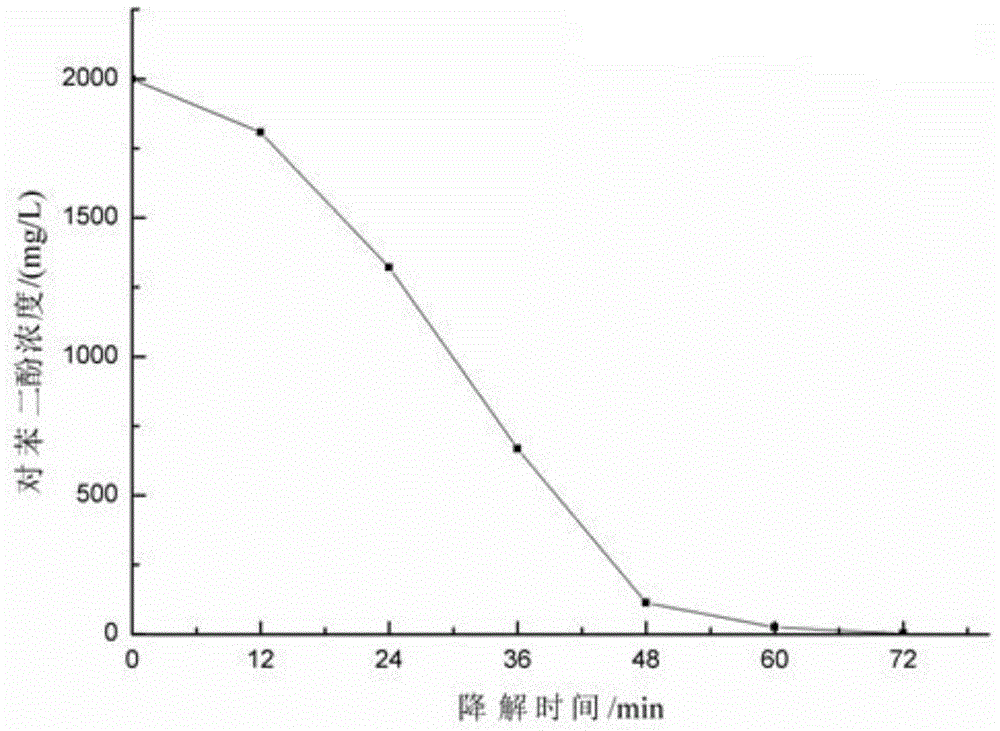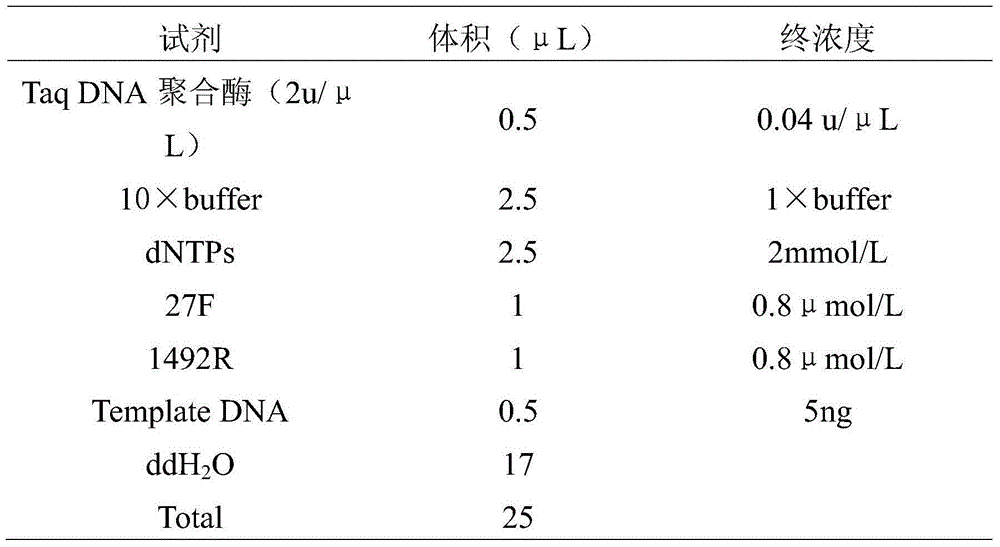Pseudomonas and application thereof
A technology of pseudomonas and uses, applied in the field of microorganisms, can solve problems such as low phenol degradation rate, and achieve the effect of efficient degradation and solving low phenol degradation rate
- Summary
- Abstract
- Description
- Claims
- Application Information
AI Technical Summary
Problems solved by technology
Method used
Image
Examples
preparation example Construction
[0024] (1) Preparation of bacterial total DNA: Genomic DNA of SY-HP-11 strain was extracted with Genome Extraction Kit of Tiangen Company, and used as a template for PCR reaction.
[0025] (2) PCR amplification of 16S rRNA gene: the amplification primers are as follows:
[0026] 27F: 5'-AgAgTTTgATCMTggCTCAg-3'[M=C,A]
[0027] 1492R: 5'-CggYTACCTTgTTACgACTT-3'[Y=T,C]
[0028] Middle primer: 533F: 5’—gTgCCAgCMgCCgCggTAA—3’
[0029] PCR reaction system:
[0030]
[0031] PCR reaction conditions:
[0032] a.94℃ for 3 minutes
[0033] b.94℃ for 1 minute
[0034] c.55℃ for 30 seconds
[0035] d.72℃ for 1 minute
[0036] e.72℃ for 1 minute
[0037] Wherein, after step a, three steps b, c, and d are performed for 30 cycles, and then step e is performed.
[0038] (3) Purification, cloning, sequencing and analysis of PCR products: PCR products were purified by agarose gel electrophoresis, connected to pMD18-T vector, transformed into E. The sequence was logged on the website ...
Embodiment 1
[0044] Under the conditions of pH 7.0 and temperature 30°C, inoculate the culture of SY-HP-11 strain in 100 mL of inorganic salt medium with hydroquinone as the sole carbon source, and the initial concentration of hydroquinone is 100 mg / L, 500mg / L, 1000mg / L, 1500mg / L, 2000mg / L, 2500mg / L, 3000mg / L, 150r / min shake culture and take samples after 72h, and use high performance liquid chromatography to determine the residual hydroquinone in the samples content to calculate the degradation rate. Taking the initial concentration of hydroquinone as the abscissa, the degradation rate of hydroquinone and OD 600 Value (thalline concentration) draws degradation and bacterial concentration curves for the ordinate, such as figure 1 Shown in , wherein, curve A is the degradation rate curve of hydroquinone, and curve B is OD 600 curve. from figure 1 It can be seen that when the hydroquinone concentration is lower than 2000mg / L, the SY-HP-11 bacterial strain has a good degradation effect o...
Embodiment 2
[0048] The measured growth of the SY-HP-11 strain after being cultured in different phenolic compound substrates is shown in Table 1, wherein, "+" means that there is colony growth, "++" means that the colony grows vigorously, " -" means no colony growth.
[0049] According to the results in Table 1, it can be seen that, in addition to being able to grow in hydroquinone medium, the SY-HP-11 strain can also grow in catechol, resorcinol, 4-methoxyphenol and 2, 6-dimethylphenol, indicating that the SY-HP-11 strain has a certain broad-spectrum for the removal of phenolic compounds.
[0050] Table 1 Growth of SY-HP-11 in different phenolic compounds
[0051] Catechol Resorcinol 4-methoxyphenol 2,6-Dimethylphenol + ++ ++ +
[0052] 3. Application of SY-HP-11 strain in the treatment of phenolic industrial wastewater
PUM
 Login to View More
Login to View More Abstract
Description
Claims
Application Information
 Login to View More
Login to View More - R&D
- Intellectual Property
- Life Sciences
- Materials
- Tech Scout
- Unparalleled Data Quality
- Higher Quality Content
- 60% Fewer Hallucinations
Browse by: Latest US Patents, China's latest patents, Technical Efficacy Thesaurus, Application Domain, Technology Topic, Popular Technical Reports.
© 2025 PatSnap. All rights reserved.Legal|Privacy policy|Modern Slavery Act Transparency Statement|Sitemap|About US| Contact US: help@patsnap.com



